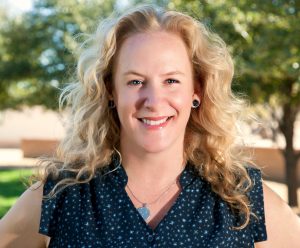
The case for ending deforestation
A walk in the woods can be a wonderful thing – getting out in nature, ambling down a shady path, listening to the sounds of birds and maybe the wind rustling through the leaves. It can be calming, restorative, and a chance to re-connect to the environment around you. Unfortunately our forests are disappearing, in poor health, and suffering from the effects of over-use and pollution. Even if a walk through the woods isn’t your cup of tea, or you live in a different climate where nature’s beauty isn’t seen in the woods but in the long vistas of the desert or the majesty of a beach, the reality of deforestation is affecting you and our planet.
From the tropical forests of the Amazon, to the snowy evergreens of the tundra – our forests are under threat and it’s having troubling consequences. We know that 8 out of 10 species that live on land inhabit forests and almost 300 million people – many of whom are in developing countries – live in forests as well. While forests still cover 30% of the world’s land surface, they are being destroyed at an alarming rate and their retreat is affecting everything from the air we breathe to species extinction rates.
Deforestation causes
Most deforestation occurs due to the clearing of land for agriculture, with logging of trees for fuel and as a natural resource, running a close second. Agriculture is important – we need to grow food to sustain our burgeoning population. Consumer items like toilet paper and paper towels are conveniences we’ve all grown accustomed to, but what are the true costs associated with these practices and are there alternatives that make sense?
Alternatives
Alternative agricultural methods are a very viable option and are becoming more widespread. Everything from Inga Alley Cropping – the concept of planting trees that nourish soil naturally to avoid traditional slash and burn techniques used in the Amazon, to a more wide-spread use and understanding of cyclic agriculture and crop rotation , both of which require less land to get the same yield. These are alternative options to the old farming systems that are continuing to degrade our forests.
Shifting our perspectives
Viewing trees as more than a natural resource to be turned into something else is a mental shift we all need to consider. What if the value of a tree is the CO2 it can retain, the shade it can provide, and the erosion control it creates? When we value trees in that way, it makes the idea of really committing to 100% recycled paper products seem like an obvious choice. Maybe those paper products can be created from more sustainable sources like hemp instead of trees? Maybe instead of a paper towel, we can employ a reusable cloth when we’re cleaning our kitchens? We don’t have to remain stuck in the antiquated systems, often perpetuated by corporate interests, that are continuing the cycle of devastation of our forests. What if we valued trees not for what they CAN become, but for what they ARE?
The cost of business as usual
What are the costs of continuing business as usual when it comes to our forests? The Amazon has lost at least 17% of its forest cover in the last 50 years due to human activity. Why does that matter? The Amazon is the world’s largest rainforest and is often referred to as the “Lungs of the World” since it creates more than 20% of the world’s oxygen. It’s also home to 1 in 10 species on Earth making it one of the most biodiverse habitats in existence. Globally, the processes involved in deforestation contribute to between 12 to 17 percent of the world’s annual greenhouse gas emissions – those are the greenhouse gases that are contributing to global warming, which are further degrading our forests through natural processes like drought and fire. At the current rate of global deforestation, we are loosing the equivalent of 20 football fields of forest every minute. The soil erosion that often comes on the heels of deforestation has far-reaching effects, like the mudslides we see in California and the floods we see in the Midwest. Oftentimes, efforts to replant areas that have lost their natural old growth forests, have sought to replace them with monoculture species that greatly reduce biodiversity.
The bottom line
We’re cutting down the mechanisms that make our atmosphere habitable by absorbing CO2 and creating oxygen, and in the process creating even more greenhouse gases, making the Earth hotter, and making it harder for trees to survive. It’s a vicious cycle and we need to break it. The deforestation of our planet is bad for trees – but it’s far worse for humans. We need to preserve our forests for their beauty, for their biodiversity, but most of all for our own preservation. If you’re ready to take action, consider supporting the efforts of groups like Amazon Watch. They are committed to protecting our rainforests and our climate by supporting indigenous peoples.
There are so many reasons to stop the deforestation of our planet but one of the easiest ones to understand is to simply think about that walk in the woods. Do we want to have the option to take that walk in the future? Do we want those that come after us to have that option? And what does our world look like without the solace and beauty of our forests?

Meredith, a former professional in the software industry, has come to the Mrs. Green’s World team through an unlikely journey that took her through the world of non-profit management and on to becoming a part of MGW. Helping people understand climate change and what we can do about it – is very near and dear to her heart. She lives in Tucson with her family and too many pets.